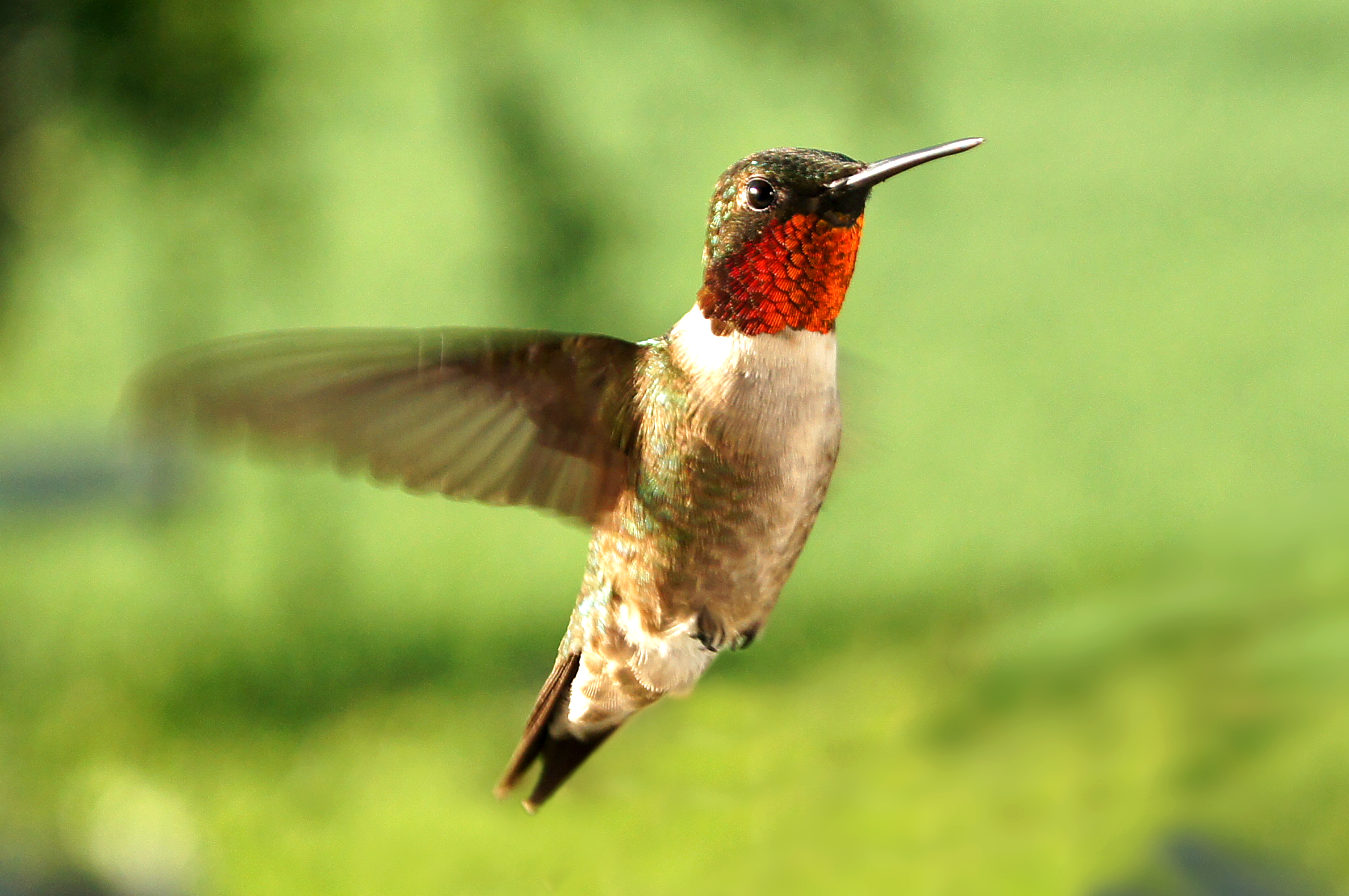The Bee – Close Up and Personal
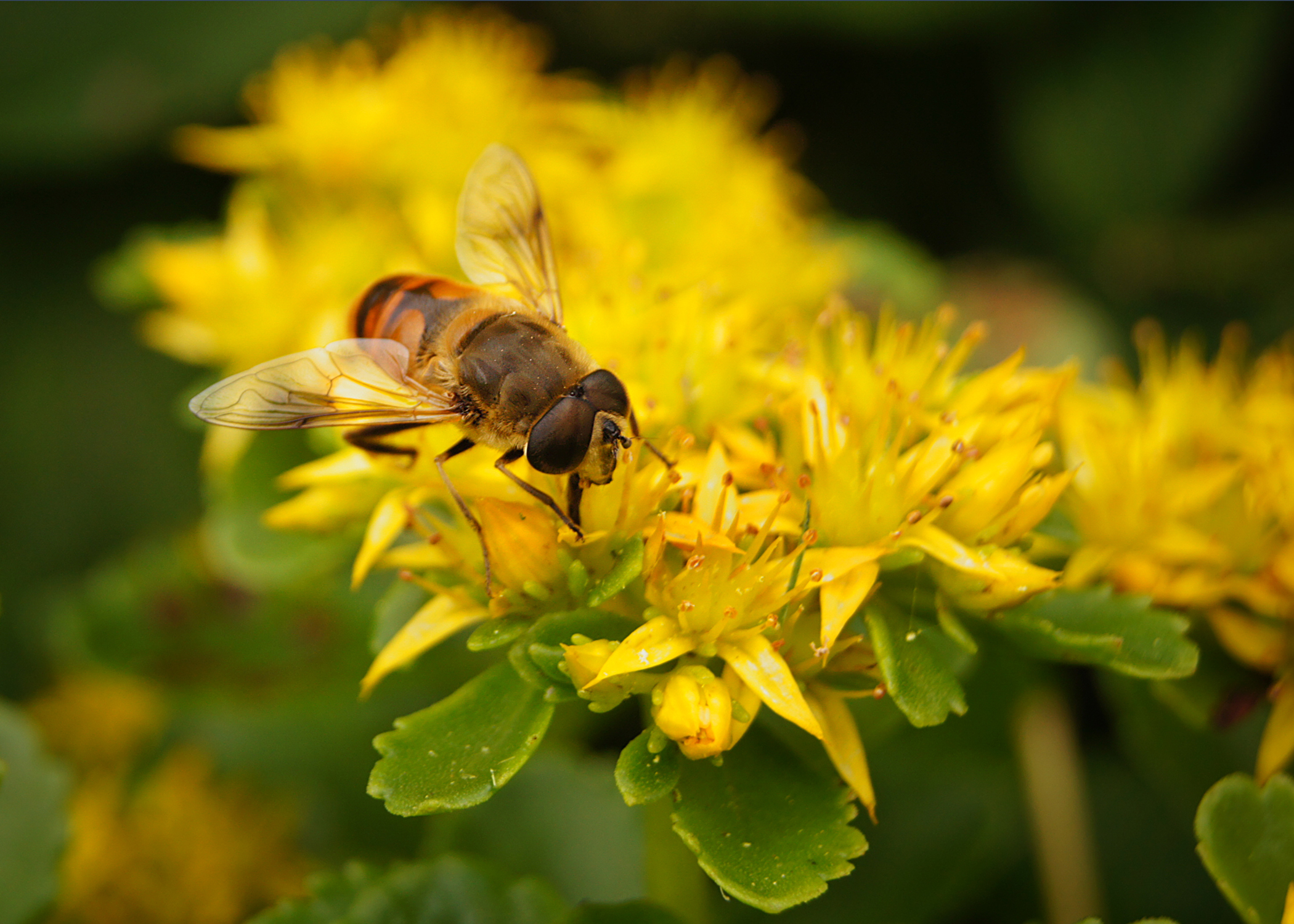
I don’t have a lot of time to travel to scenic places around the world – or even in my own area – so a lot of my photos are taken around my rural Kewaunee County, WI home. I often take a walk around my yard and photograph whatever catches my eye. Here’s what caught my eye recently.
I enjoy experimenting with macro photography. Getting a close up view of small things and capturing detail that is not apparent to the casual observer gives me a kick. Like in this image – that little thing that sticks out of the bee’s head and the cellophane look of the wings interests me. I think the eyes look more like a pair of over-sized sunglasses, too.
This photo was taken at one of my wife’s flowerbeds on the side of our house. There were a number of bees working over these little yellow flowers.
Thankfully, no bees or humans were harmed in the process of getting this image.
(To see a larger version, just click on the image.)
A Little Privacy, Please
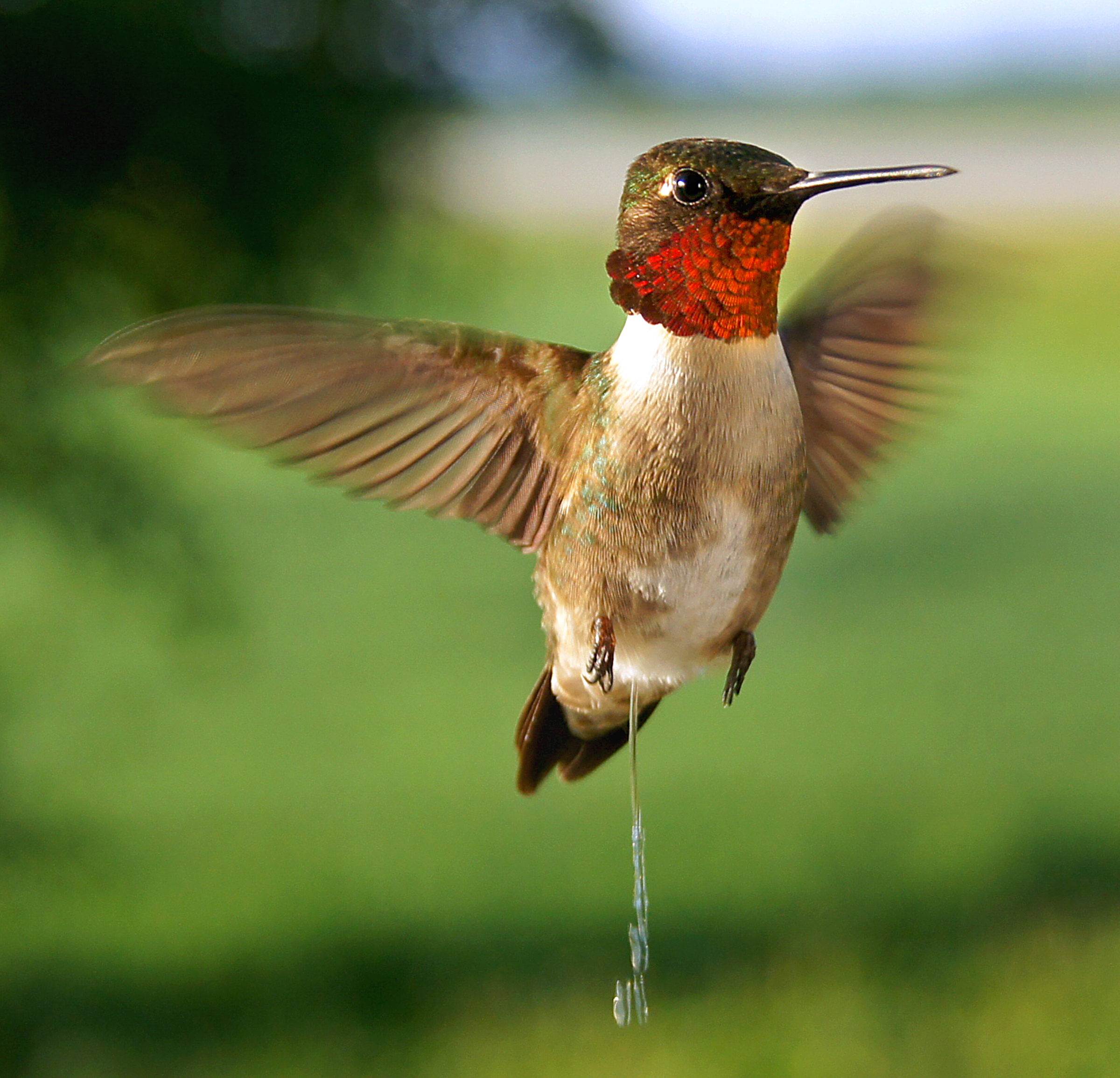
Ooops! How embarrassing! With all the hundreds of hummingbird photos I’ve been taking, it was bound to happen. This male, ruby-throated hummingbird, in all his glory, decided to take a potty break just as the shutter snapped.
I can only imagine the bathroom jokes and juvenile laughter circulating out there right now. Come on now, it’s a natural part of life. Everyone does it, right? (Although, hopefully, not in broad daylight in front of photographer.)
For those who are curious as to how the excretory system works in hummingbirds. Here’s some info from Operation Ruby Throat at www.rubythroat.org…
The Ruby-throated Hummingbird’s excretory system is typical of other birds, with paired kidneys. Liquid waste separates from digestible items in the gastrointestinal tract and goes to the kidneys, where liquid waste and ammonia (converted to uric acid before reaching the kidneys) are filtered out. Urine travels from each kidney through the ureter to the cloaca, where it mixes with solid wastes. There is no urinary bladder–yet another weight-reduction mechanism that makes flight easier–and wastes are expelled as they are produced.
(If you’re not too embarrassed and would like to see a larger version, just click on the photo.)
Can’t Hold Her Licker
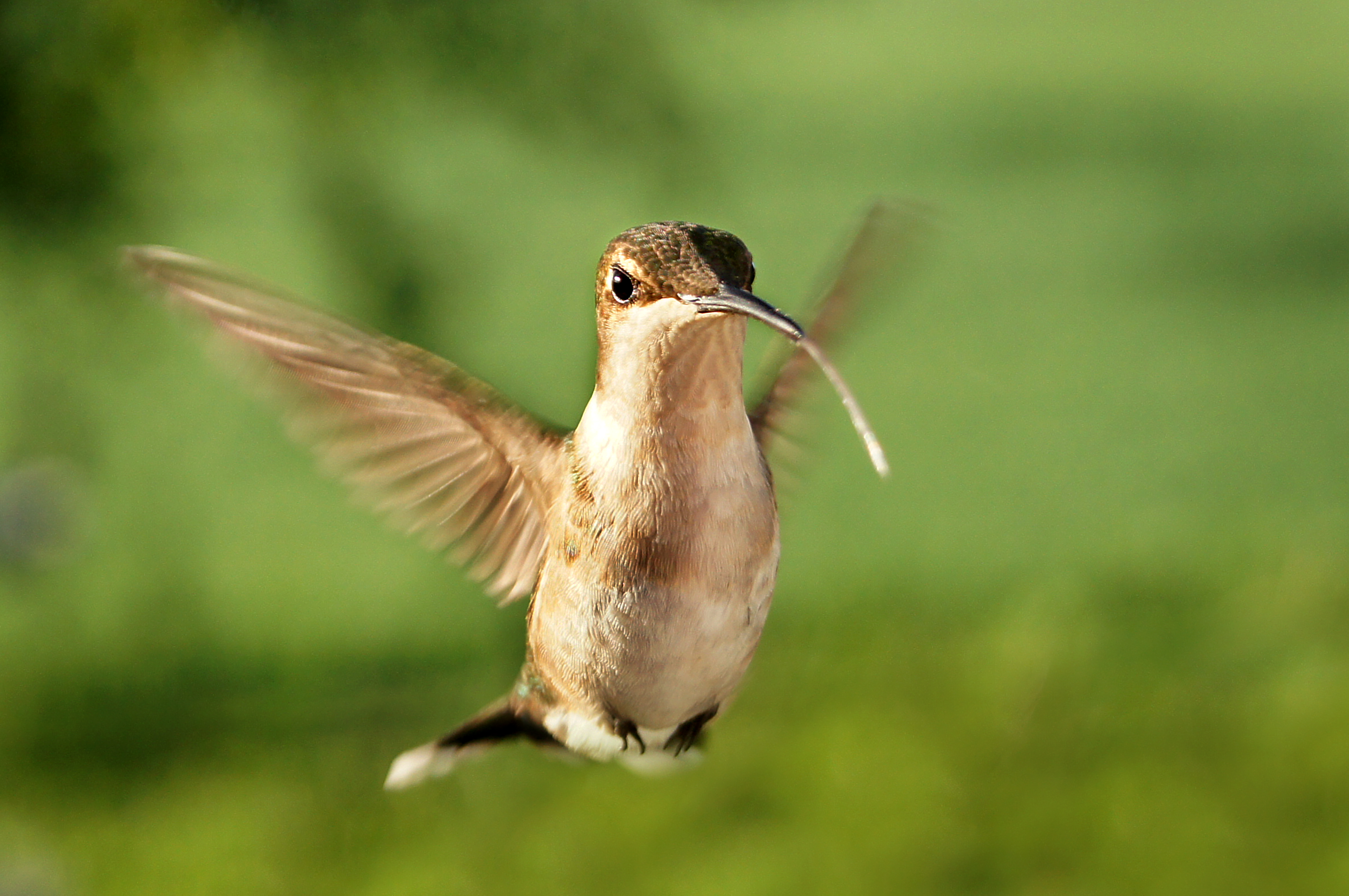
It happened so fast, I didn’t see this at the time I took the photo. This female, ruby-throated hummingbird was sticking her tongue out at me at the precise moment of the shutter snap.
It’s too bad you can’t see it clearly because the tongue was moving so fast and was out of the range of focus.
Here are some fascinating facts about the hummingbird tongue from www.worldofhummingbirds.com …
The tongue on a hummingbird is very long. It is grooved like the shape of a “W”. On the tip of the tongue are brushy hairs that help lap up nectar from a flower. A hummingbird can lap up nectar at a rate of about thirteen (13) licks per second. Hummingbirds have only a few taste buds on the tongue. Hummingbirds can taste just enough to know what is good and what is bad. They can also taste what is too sweet, not sweet enough, or just right.
(To see a larger version of this image, just click on the photo.)
Morning in Blue
Spider Assassin
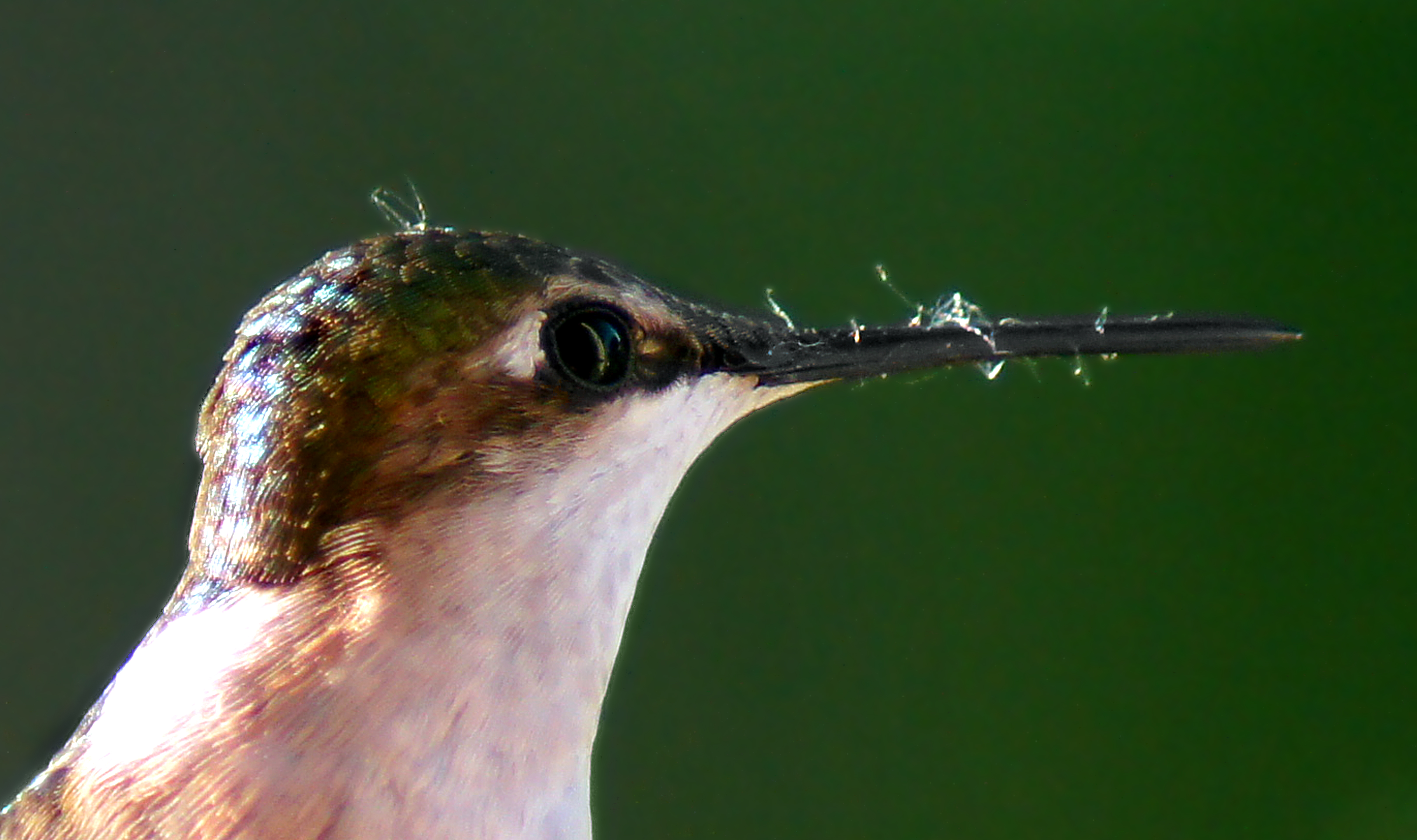
Sure…she looks sweet, petite and innocent, but beneath that tiny hummingbird breast beats the heart of a skilled killer. She is a spider assassin! (By the way, that heart beats at about 250 beats per minute while resting and about 1,260 beats per minute while flying.)
This photo could be used as evidence in an avian court to convict her. You can clearly see strands of spider web stuck to her beak and a bit on her head. As further evidence, take a look at a photo I entitled Delicate Delight; posted a few days earlier. If you look closely at this image of another female hummingbird captured in flight, you will notice little bits of spider web stuck to her beak, too.
Most people mistakenly think that a hummingbird’s diet consists solely of nectar from flowers and feeders that people hang in their garden. Hummingbirds also need protein. They get that protein from a variety of bugs…including spiders.
And here’s another fascinating fact about the world’s tiniest birds – hummingbirds use spider webs to build their nests.
Here are some notes from worldofhummingbirds.com – –
Hummingbirds love to eat small bugs like gnats, aphids, and spiders. The hummingbirds will even eat all of the bugs out of the spider web, eat the spider, and then steal the web to help build a nest.
[To build a nest] She likes to use nice soft material like moss and lichen. She also likes to use cotton fluffs, bits of willows, soft plant pieces, dryer lint, and leaf hairs. She will bring these items back to her nest a little at a time, gluing it all together with spider webs. The spider webs make terrific glue for the nest, allow the nest to stretch and be flexible as the baby hummingbirds grow, and make it easier for the mother hummingbird to repair the nest when kids do what kids do.
If you learned something new and liked the photo, please share this post with a friend and leave a comment. (Thanks!)
(This image has been enlarged a great deal to make it easier to see the spider web. If you’d like to see an even larger version, simply click on the photo.)
First on the Scene
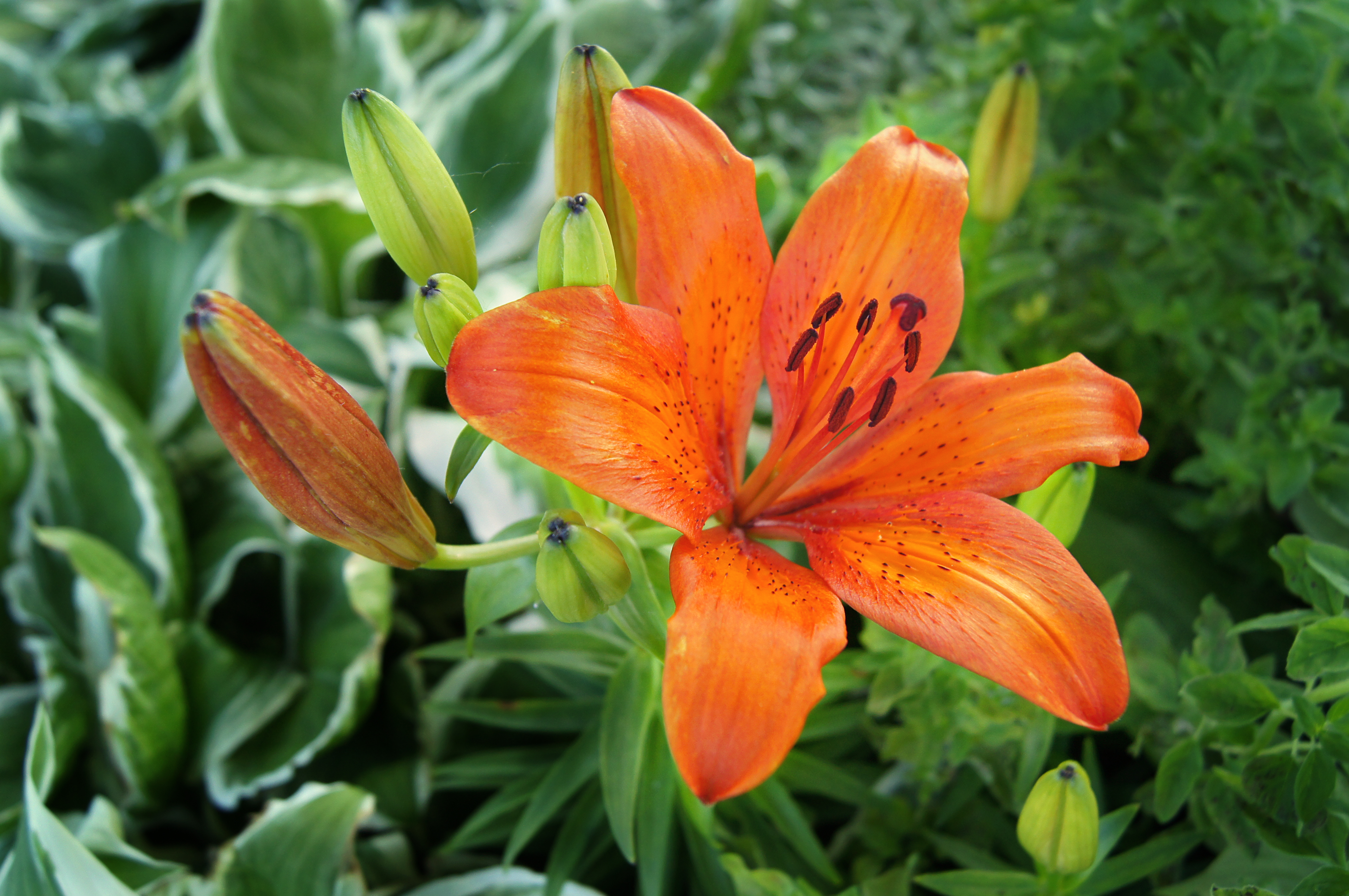
Make a note on the calendar – the first lily to display its beauty at our house this season happened on Wednesday, June 29th. As you can see, there will be many others to follow, but there’s something noteworthy about the first one. 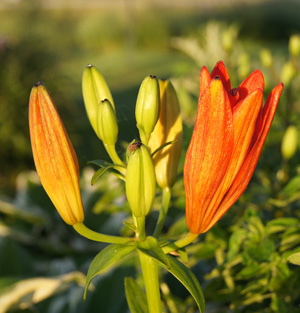
I’ve been keeping my photographer’s eye on the flower bed and could see the bloom was about to begin. The slender, green pods were beginning to blush.
For comparison, I took a picture of the same lily at the beginning of its opening, in the early morning light of the rising sun. (The smaller image on the right.) This would have been a good time to set up a time-lapse camera – if I had one.
The “grand opening” continued through the day until full bloom, as captured in the larger photo, taken in the early evening of the same day.
(You can see an even larger view of the top image by clicking on it.)
Humdinger
hum·ding·er/ˈhəmˈdiNGər / Noun: A remarkable or outstanding person or thing of its kind.
There’s little that compares to the dazzle of a male ruby-throated humming bird when the light hits it just right. If you’re able to watch one while he’s perched, you’ll see flashes of brilliant red with just a slight turn of his head.
Even though the sunlight is coming more from behind this bird, I used a shiny surface to reflect some of that sunlight to the front side, bringing out the colors of his gorget (the neck area).
(Click the image to see a larger version.)
All of the photos I post are available for purchase. If you’d like to buy one, click on the blue “Buy this Online” bar below for a variety of print and frame options or contact me for digital purchase and licensing options.
Sunrise Siren Call
I had plenty to accomplish this morning before going to work. My mind wasn’t on photography, but when I stepped out our back door (on my way to fill the bird feeders for the day) I was captivated by this amazing morning sky. I had stuff to do. I already have plenty of sunrises in my photo collection. (Just browse through this blog or type “sunrise” in the search box.) Still, I couldn’t help myself. I had to grab this image. This was a morning I wish I was at one of the nearby harbors – to catch the reflection off the water, too.
This is actually the compilation of seven separate photos “stitched” together. The blog page, because of its size limitations, doesn’t do it justice. If you click on the photo, you can see a larger version…but, in my opinion, it’s still too small to get anywhere close to the full effect.
Delicate Delight
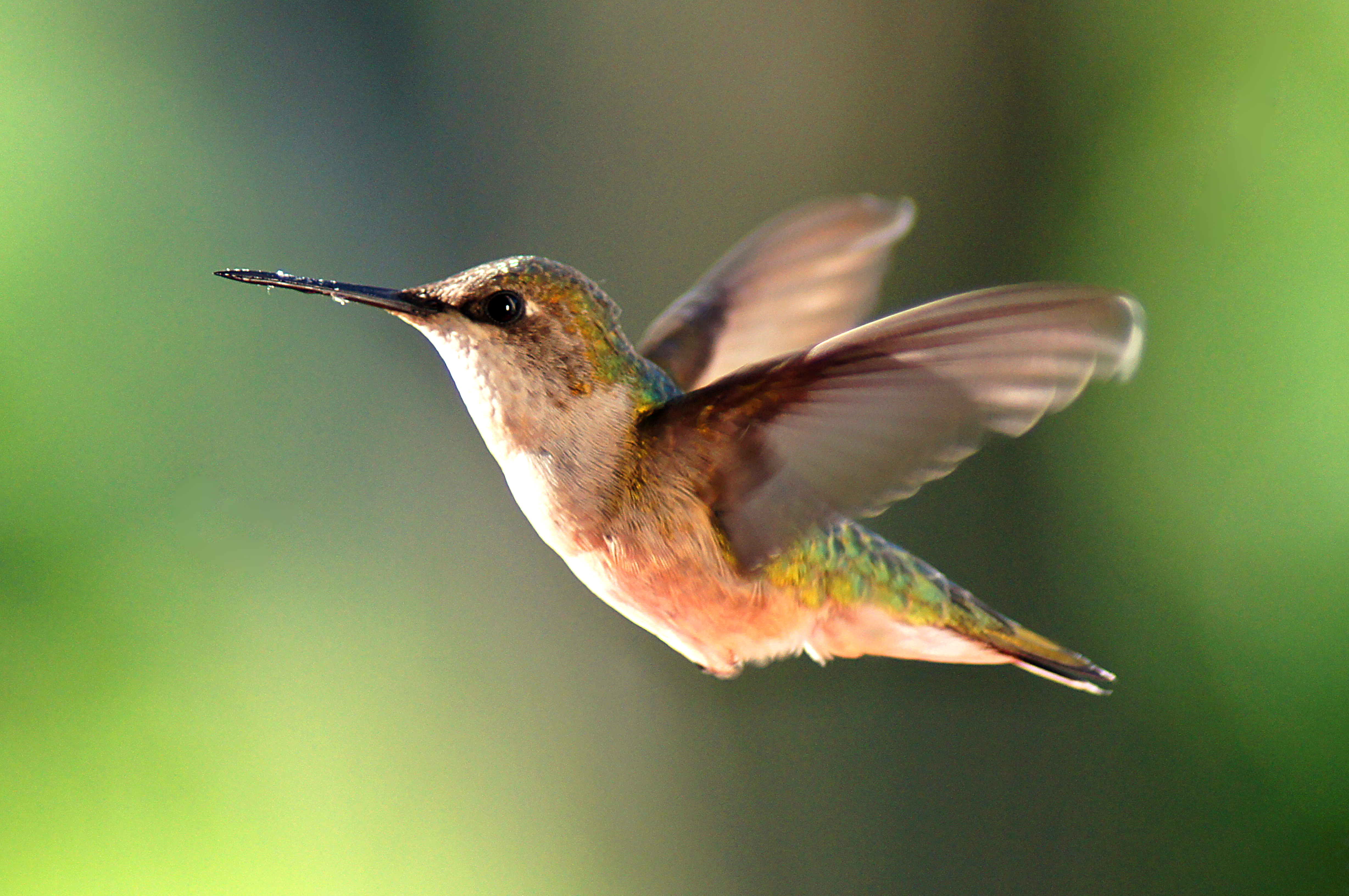
Hummingbirds are fascinating and beautiful…the perfect subject to photograph…and one of the most challenging.
This is an image I captured early last Saturday morning (6/24/11). I spent a couple of hours and snapped more than 400 photos to come up with a handful of worthwhile images.
Snapping more than 400 photos sounds a lot harder than it was. My camera has a setting that allows me to press and hold the shutter button and take up to 10 frames per second. With that kind of speed, you can knock out an SD card full of images pretty quick.
The greatest challenge, at least for me, is to capture the birds in focus. When in flight, they are constantly zipping in and out, back and forth, up and down. I had an embarrassing amount of empty frames, where the bird had left the field of view before I could snap…or stop snapping. When I did catch the bird in the frame, they often were blurry.
With enough patience, some experimentation and a bit of dumb luck, I was able to get a few “keepers.” This is a good example. I’ll be posting a few more in the next few days, so check back.
(Click the image to see a larger version.)
All of the photos I post are available for purchase. If you’d like to buy one, click on the blue “Buy this Online” bar below for a variety of print and frame options or contact me for digital purchase and licensing options.
Bluebird Trio
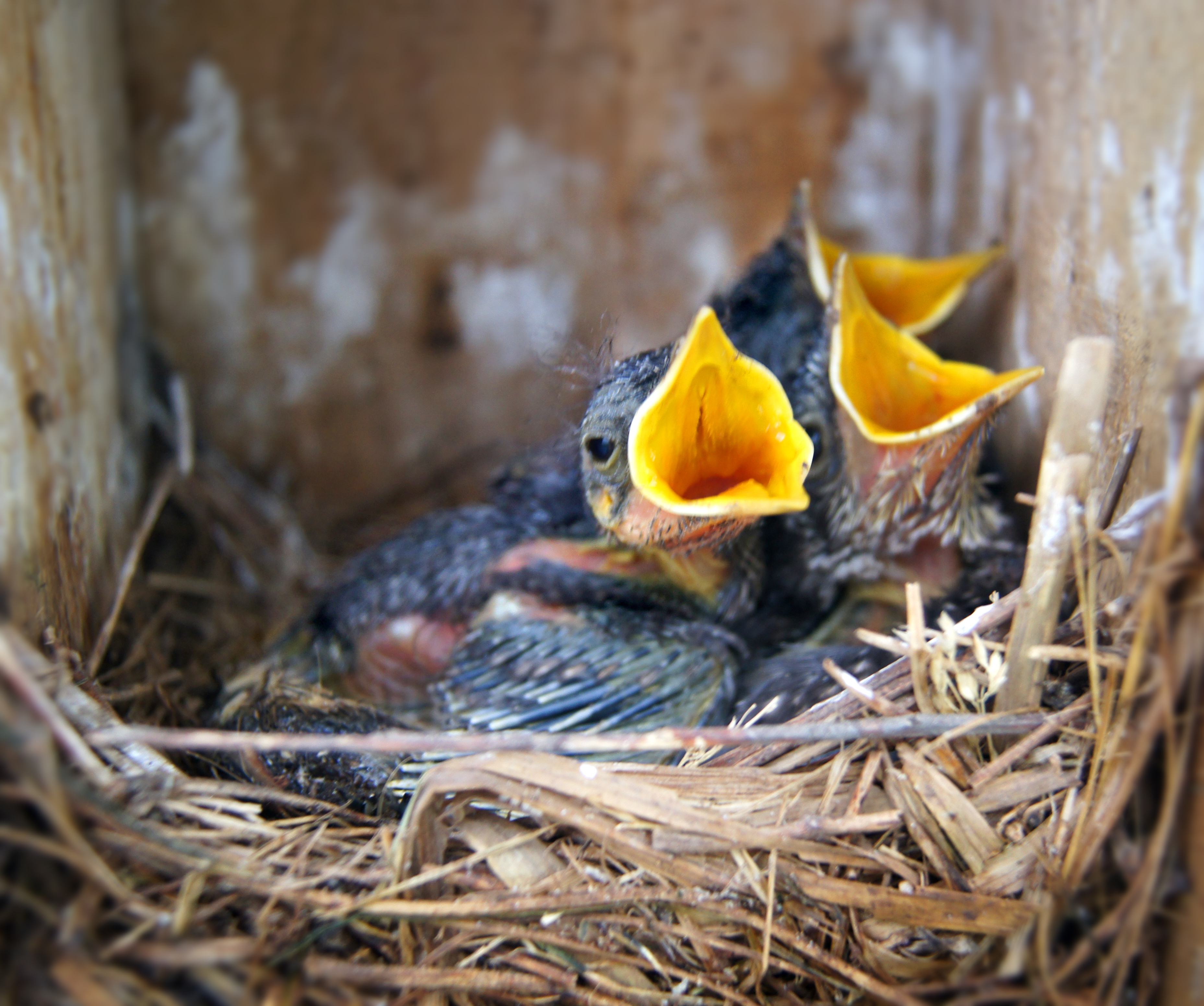
These blue birds look like their belting out a favorite song in three-part harmony. Actually, they are hoping someone will drop a worm or bug in their mouths. The wide open mouths are a response to a soft whistle from me. Even though I don’t sound anything like a blue bird, the whistle is close enough to make them think lunch is being served.
 The smaller photo features the soloist of the family.
The smaller photo features the soloist of the family.
These blue birds are about a week old and progressing along nicely. However, not everyone in the brood has fared so well. Before the hatch I counted six eggs. It appears that four hatched and survived, but we found one of the four dead and removed it from the nest. (Surprised that the parents hadn’t removed it, since it had been dead for awhile and was smelling really bad.)
They have a couple of weeks to go before they are ready to take to the wing. It’s going to get very crowded in that little box by the time they fledge. There were five that survived to fledgling stage last year. That box was really crowded.
(Click on either image to see a larger version.)




















































